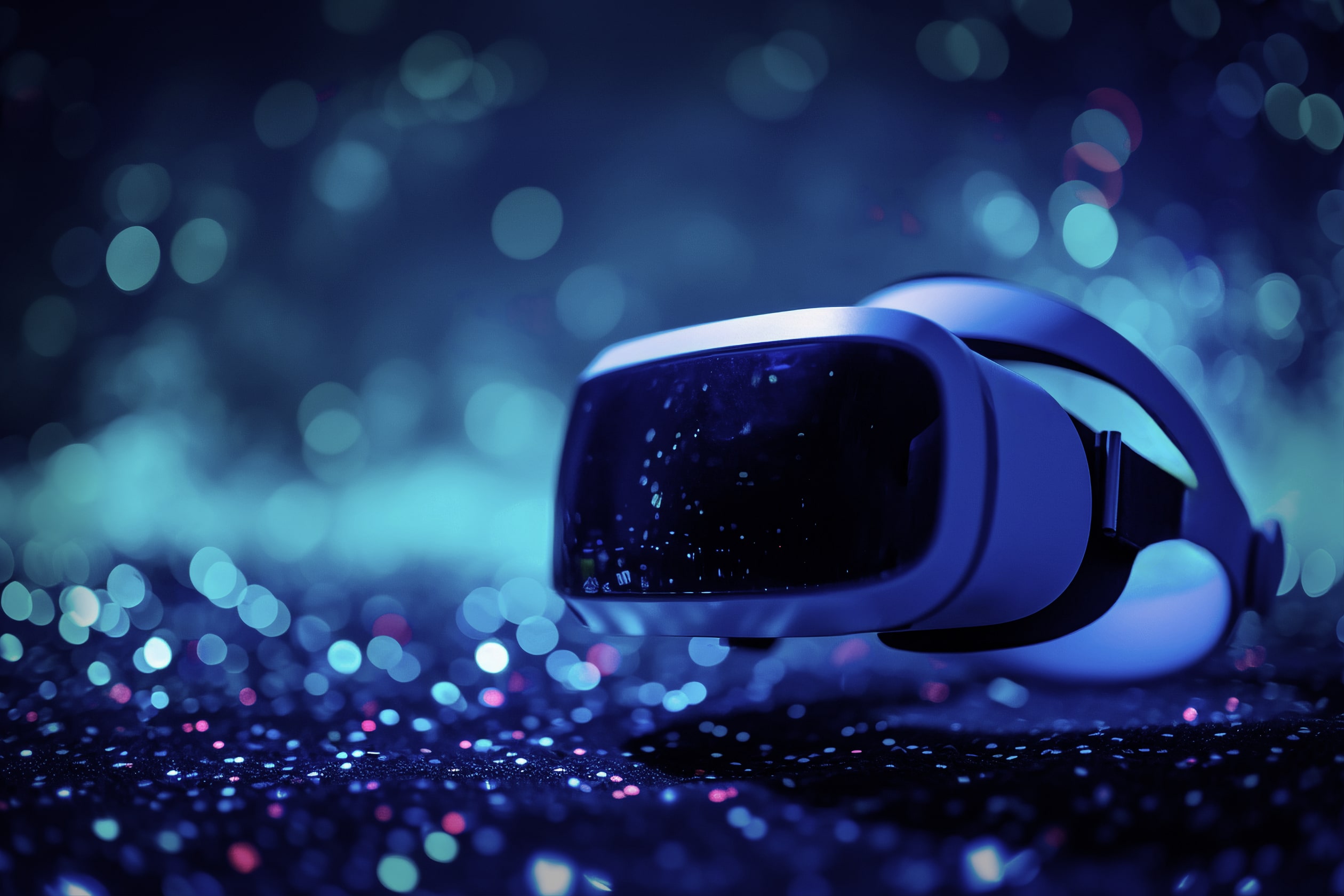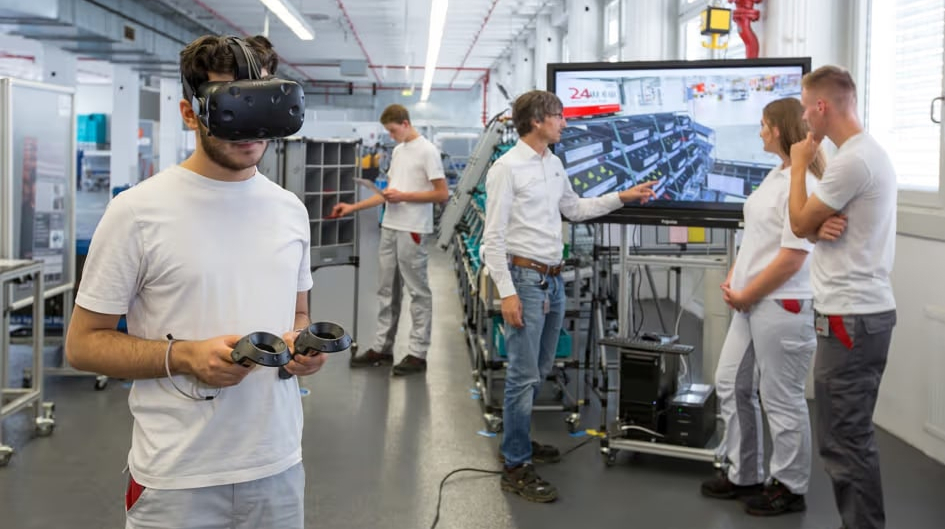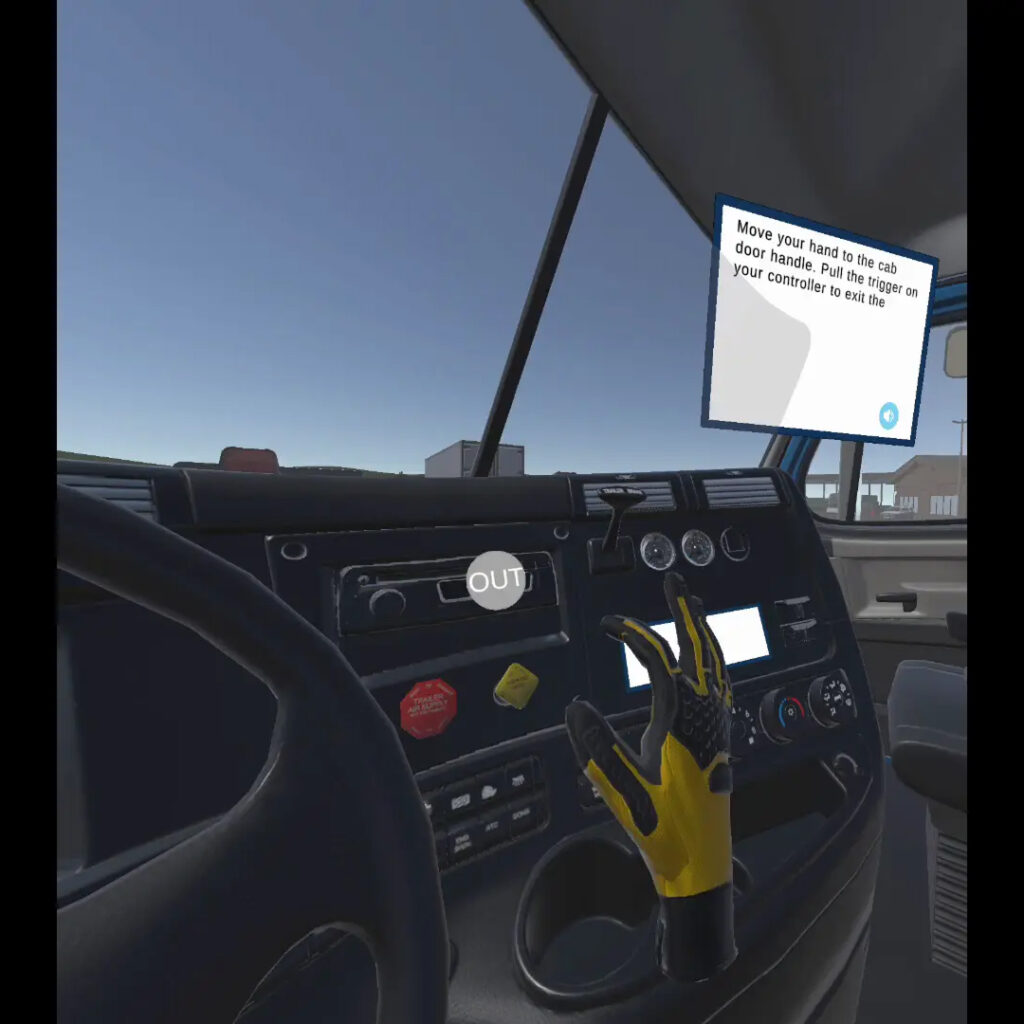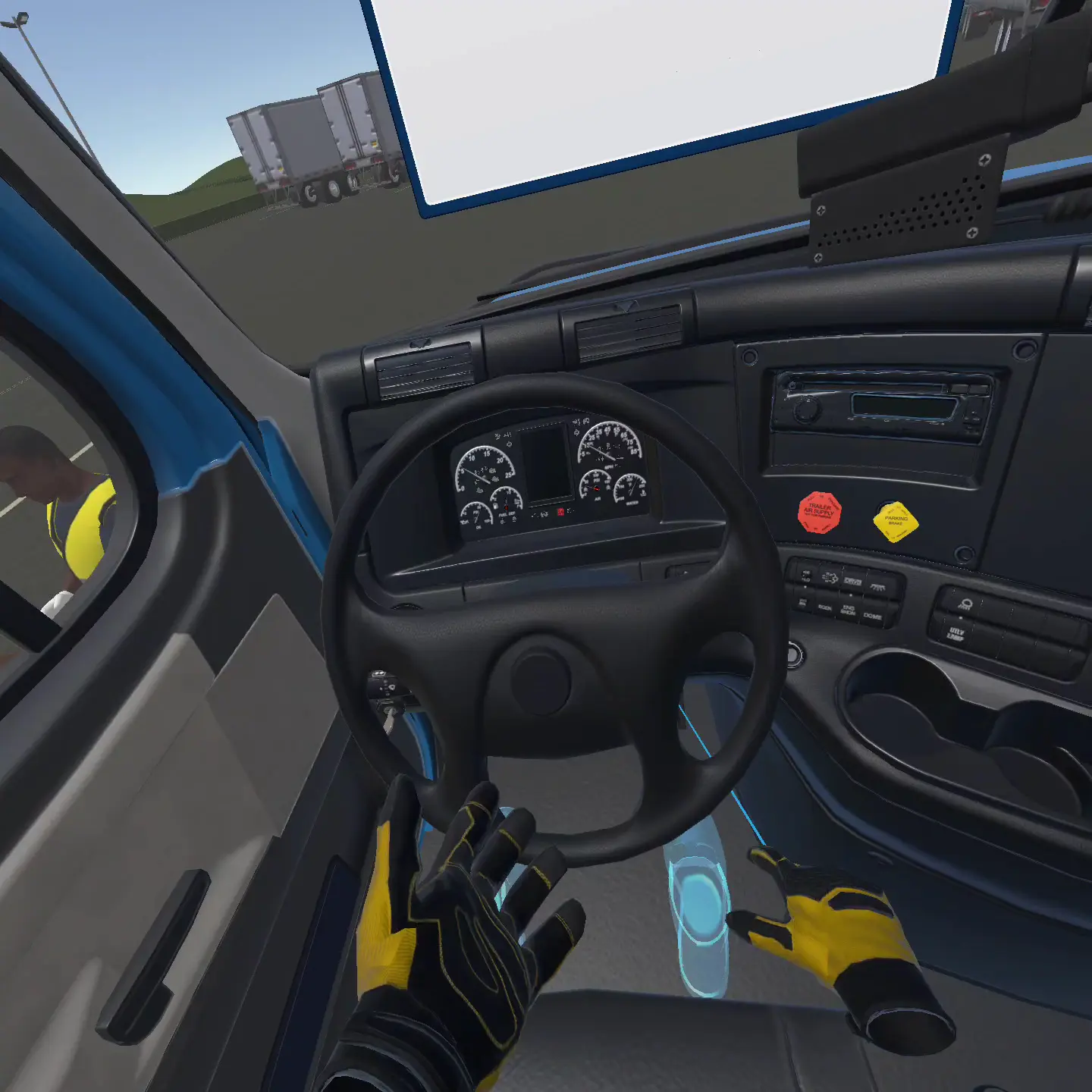- 21.02.2025
- 10 min read
- Artur Tereshchuk


Virtual reality has come a long way from being just a cool gaming gimmick – today, it’s a major tool in the business world. No longer viewed as futuristic or niche, VR and AR solutions are making their way into the everyday operations of companies across industries. Whether it’s a global enterprise refining its logistics or a startup exploring new ways to train employees, businesses are realizing that these immersive technologies aren’t just flashy add-ons.
Studies prove that companies investing in VR and AR see real benefits. PwC found that employees trained with VR are up to four times more focused and complete their training four times faster than those using traditional methods. Meanwhile, the IBM Institute of Business Value reports that businesses using AR have improved productivity by 32% and cut task completion time by nearly half. From reducing errors in complex manufacturing processes to transforming customer experiences, AR and VR in business are proving to be more than just a trend.
In this article, we’ll dive into some of the most exciting real-world applications of VR and AR, showing how major companies are using these tools to train employees, streamline operations, and revolutionize industries. Whether it’s UPS training drivers, McLaren designing cars, or Verizon improving customer service, these examples highlight how companies use virtual reality to stay ahead of the curve.

Volkswagen has adopted augmented reality in business by implementing VR and AR technologies in design and production. The company has implemented VR-driven design reviews, immersive training simulations, and remote collaboration tools to streamline production processes. By creating virtual prototypes and allowing engineers and designers to interact with them in a digital space, Volkswagen reduces the need for costly physical models and speeds up the development cycle.
This use of virtual reality for business has significantly cut costs and improved efficiency across the organization. The ability to collaborate remotely in VR has allowed global teams to work seamlessly, reducing travel expenses and decision-making time. Furthermore, Volkswagen’s cloud-based infrastructure enables real-time rendering of complex designs, making these technologies more scalable. This is a prime example of how companies use virtual reality to enhance innovation, demonstrating that VR apps for business can drive tangible improvements in performance and cost savings.
Developed by Goggle Collective with contribution from N-iX MR, Vector Suite is a VR-based 3D modeling software used by McLaren Automotive designers. This tool simplifies concept creation by allowing users to sketch in a virtual space, overlaying designs onto existing engine, radiator, and chassis models.

Vector Suite makes the transition from 2D sketches to 3D models seamless, cutting down design time from weeks to days. McLaren’s Head of Design Operations, Mark Roberts, has praised the software for improving efficiency, helping McLaren boost car production from 4,000 to 6,000 vehicles annually by 2025.
This VR solution reduces design costs, improves collaboration between remote teams, and removes the need for physical prototypes.
As electric vehicles become more common, Volvo has introduced virtual reality for business training programs focused on electric truck maintenance. Traditional training for battery replacement and high-voltage system repairs can be costly and risky, but VR offers a safe and efficient alternative. Through realistic simulations, technicians can learn the intricate processes of electric truck maintenance without any real-world hazards.
By incorporating VR in business operations, Volvo has drastically reduced training-related expenses and minimized the risks of handling high-voltage components. Technicians gain confidence through repeated practice, leading to fewer errors and faster repairs. This business use for VR optimizes technical training while ensuring safety and efficiency in a changing industry.

In the world of professional sports, split-second decisions can make or break a game. Jayden Daniels, quarterback for the Washington Commanders, has integrated virtual reality into his training. Using VR simulations, Daniels immerses himself in realistic game scenarios to analyze defensive strategies, react to potential plays, and refine his on-field decision-making skills – all without the physical toll of traditional training.
This approach to training offers multiple benefits. By leveraging virtual reality for business purposes in sports, Daniels can mentally rehearse various game situations, leading to improved reaction times and strategic thinking. Additionally, the reduced physical strain allows him to stay in peak condition while still sharpening his skills. This innovative use of VR apps for business in sports showcases how companies use virtual reality to enhance performance, making it a top VR business use that is gaining traction in professional athletics.
At N-iX MR, we’ve tackled a similar project, collaborating with StatusPRO to develop the VR Football Visualizer – an advanced tool designed to revolutionize how football matches are studied and experienced. This application provides an immersive 3D environment where coaches, players, and fans can study game strategies, player movements, and match dynamics from multiple perspectives.
With an intuitive and interactive interface, the VR Football Visualizer allows users to engage with detailed simulations of real matches. Coaches can fine-tune game strategies, players can review their performances, and fans can gain unique insights into their favorite teams. Designed for accessibility, the software offers an enhanced experience for both professionals and sports enthusiasts.
By integrating VR into sports analytics, N-iX MR is helping drive the future of virtual reality in business applications for the sports industry. This project demonstrates how companies use virtual reality to optimize training, improve performance analysis, and elevate fan engagement, reinforcing the growing role of VR apps for business in modern sports technology.
Verizon has implemented VR training to improve customer service. Employees practice handling difficult interactions in a controlled virtual environment, developing empathy and de-escalation skills. Employees experience various challenging scenarios, from frustrated customers to complex problem-solving situations, allowing them to practice responses in a controlled, virtual environment.
The benefits of this virtual reality for business initiative have been remarkable. Verizon has reported improved customer satisfaction scores, a reduction in workplace stress among employees, and decreased reliance on in-person workshops, which can be expensive and time-consuming. This showcases how companies use virtual reality to create more engaging and effective training programs, proving that VR apps for business can be a game-changer in workforce development.

DHL has introduced augmented reality in business by integrating AR-driven smart glasses into its warehouse operations. These smart glasses provide real-time order-picking assistance, overlaying digital information onto the physical environment to guide employees efficiently through the picking process. Workers receive clear, step-by-step instructions, reducing the need for paper-based lists and minimizing errors.
The implementation of AR has significantly increased efficiency and accuracy in DHL’s supply chain processes. By reducing errors and streamlining logistics, DHL has demonstrated how AR and VR in business can revolutionize supply chain operations, offering a strong return on investment.

Airbus has adopted mixed reality solutions to enhance its aircraft assembly processes. By overlaying digital instructions onto physical components, engineers and technicians can follow precise, real-time guidance without referring to traditional manuals. This technology speeds up the assembly process while reducing human errors, ensuring higher quality standards in aircraft manufacturing.
By integrating virtual reality and augmented reality in business operations, Airbus has increased efficiency and cut production costs. Employees can access digital overlays that highlight assembly sequences, reducing the likelihood of mistakes.
Siemens Energy has integrated VR training modules to educate power plant operators on routine tasks and emergency procedures. By simulating real-world scenarios in a controlled virtual environment, trainees gain hands-on experience without the risks associated with live training. These modules cover everything from standard maintenance to critical safety protocols, ensuring operators are fully prepared for real-world operations.
The use of VR in business training has enhanced operator performance, improved response times during emergencies, and increased overall safety. This business use for VR demonstrates how immersive simulations can drive operational efficiency and risk reduction in high-stakes industries like ener

UPS has upgraded its driver training programs with virtual reality. The logistics giant developed immersive VR modules that simulate real-world driving challenges, such as maneuvering through congested urban areas, reacting to sudden pedestrian crossings, and navigating hazardous weather conditions. By using VR, UPS provides its trainees with a safe yet highly realistic environment to practice their driving skills before they hit the road.
The impact has been substantial. This VR in business initiative has significantly reduced training time and costs while improving overall driver safety. Employees report feeling more confident and prepared, leading to a measurable decrease in accidents and delivery delays. The company’s approach highlights one of the key business uses for VR: enhancing workforce training while boosting efficiency and safety. As UPS continues refining this program, its success demonstrates the growing role of AR and VR in business operations.
Our company has worked on a similar solution, collaborating with PIXO VR to develop a VR training program that enhances truck drivers’ vehicle inspection skills. This technology enables drivers to identify and address potential safety risks before they become real hazards.
Optimized for Focus and Pico headsets, the program provides an interactive and immersive learning experience. It covers essential inspection areas like lights, brakes, and in-vehicle safety checks. Features such as randomized vehicle faults and freeplay inspection sequences make training both engaging and effective.


This VR business solution enhances workforce training by providing a risk-free, hands-on environment. It helps drivers sharpen their skills, reduces maintenance costs, and improves overall road safety. This project demonstrates how companies use virtual reality to modernize training and set new industry standards.
Walmart has implemented VR training for its employees, focusing on customer service, store operations, and soft skills. Employees engage in realistic simulations to prepare for high-pressure situations like holiday sales and challenging customer interactions.
The impact has been substantial, with reports indicating a 30% increase in employee satisfaction and up to 15% higher knowledge retention rates. This demonstrates how VR apps for business can transform corporate training, making learning more effective and engaging.

Ikea has redefined the shopping experience with its IKEA Place app, which allows customers to visualize furniture in their homes using AR technology. By providing true-to-scale product placements, customers can see how items fit and match their spaces before making a purchase. The app’s advanced features include real-time lighting effects and spatial mapping for a more accurate representation.
This use of augmented reality in business has led to increased customer confidence, reduced return rates, and an overall enhanced shopping experience. By bridging the gap between online and in-store shopping, Ikea showcases how AR can drive sales and improve customer satisfaction.
The rise of VR and AR in business is more than just a trend – it’s a fundamental shift in how industries operate, train employees, and engage customers. From improving workforce training at UPS and Verizon to revolutionizing design processes at McLaren and Volkswagen, these technologies are proving their value across various sectors. Businesses that embrace VR apps for business and augmented reality in business are not only increasing efficiency but also gaining a competitive edge. As adoption continues to grow, companies that leverage these innovations will shape the future of work, design, and customer experience.
If you’ve decided that your business could benefit from a VR or AR upgrade, then we can explore how immersive technology can enhance your operations. N-iX MR provides full-cycle VR & AR solutions tailored to businesses and their needs. From concept and development to implementation and support, N-iX MR helps companies integrate VR apps for business seamlessly. Contact our team, and we’ll create a tailored VR or AR solution that aligns perfectly with your business goals and operational needs.